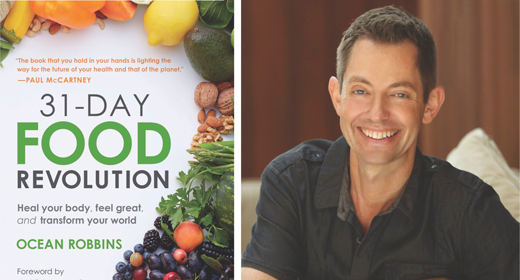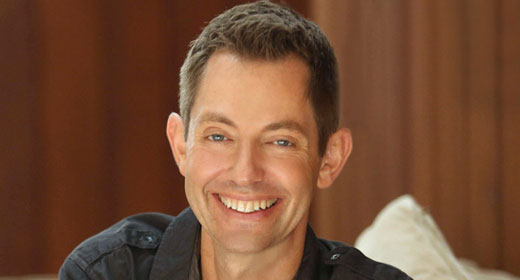Rollo May was the writer most responsible for introducing European existentialism to U.S. readers.
 This included both philosophical inquiry into anings of human existence & experience, and the existential psychiatry which identified these philosophical issues as the core of an existential psychotherapy.
This included both philosophical inquiry into anings of human existence & experience, and the existential psychiatry which identified these philosophical issues as the core of an existential psychotherapy.
B. THE EXISTING PERSON. May reflects Sartre’s view in his belief that the person cannot be seen in just terms of mechanisms and drives. That removes what is most personal and uniquely human, and blocks our understanding of what the person is really experiencing. The one real datum we have in the therapeutic situation is the existing person sitting in a consulting room with a therapist.
C. TRANSFERENCE AND ENCOUNTER. “Transference… vastly enlarges the sphere and influence of personality; we live in others and they in us.” An emphasis on the concept of transference can undermine therapy in that it denies the reality of the relationship. “Transference is the distortion of encounter.” The therapist can hide behind it to protect himself from the anxiety o_ direct encounter.
D. ANXIETY
1. There is wide agreement that anxiety is a diffuse apprehension, “vague” and “objectless” while fear is a reaction to a specific danter. Characteristics of anxiety include uncertainty and helplessness in the face of the danger.
2. Anxiety is a threat to something in the “core or essence” of one’s personality (Victor adds, –or one’s life.) Anxiety is apprehension cued off by a threat to some value which the person holds essential. (off the dock.)
3. Normal anxiety
a. .Is not disproportionate to the objective threat
b. Does not involve repression or other mechanisms of intrapsychic conflict, and
c. Does not require neurotic defense mechanisms to manage, but can be confronted constructively on the level of conscious awareness or can be relieved if the objective situation is altered. Freud called normal anxiety, “objective anxiety.”
d. May mentions that Otto Rank has emphasized that normal anxiety occurs in all experiences of “separation” throughout the person’s life. If negotiated successfully, these experiences can lead to greater independence and to re-establishment of the relations with parents and others on new levels.
4. Neurotic anxiety is the result of not facing normal anxiety. To run away from anxiety means automatically surrendering a measure of one’s freedom.
5. Neurotic anxiety
a) Is disproportionate to the objective danger
b) Involves repression (dissociation) and other forms of intrapsychic conflict
c) Is managed by inhibitions of activity and awareness, the development of symptoms, and defense mechanisms. Note that the reaction is disproportionate to the objective danger because some intrapsychic conflict is involved — thus the reaction is never disproportionate to the subjective threat.
6. Neurotic anxiety occurs when inability to cope adequately with threat is subjective — is due not to objective weakness but to inner psychological patterns and conflicts which prevent the individual from using his powers. Often this is rooted in early childhood. Horney, for instance, notes the conflict which may occur between dependence on parents and anger toward them.
7. The child develops toward decreasing dependence on parents and increasing use of own powers, and toward progressive relating to parents and others on new levels. When either of these kinds of development is blocked, it produces psychological conflict which results in anxiety.
8. Anxiety gives rise to hostility. For example, a dependent person, finding herself in a position of responsibility with which she feels she cannot cope, reacts with hostilitytoward those who have placed her in the situation and toward those who caused her to be unable to cope with it.
E. FREEDOM
1. Freedom is a quality of action of the centered self: One who is in touch with parts of himself or herself.
2. Freedom always involves social responsibility. It occurs within the context of a perception of limits. The self always exists in a world.
The capacity to confront limits is part of freeedom.
3. Subordination strikes at the core of human dignity of the master as well as the slave. Slavery destroys the freedom of both.
4. We too easily think that freedom comes as our birthright and forget that we each must rediscover it for ourselves.
5. The purpose of psychotherapy, suggests May, is to set people free. “Freedom is the capacity to pause in the face of stimuli from many directions at once and, in this pause, to throw one’s weight toward this response rather than that one. The person becomes able to say, “I can” or “I will.”
6. Hating or resenting can serve as a way to avoid psychological or spiritual suicide by preserving some dignity, some feeling of one’s own identity. The person says, in essence, “You have conquered me, but I reserve the right to hate you.”
7. The mark of maturity is to transform hate and resentment into constructive emotions, but the fact that a person will destroy him/herself or something else rather than surrender fjreedom shows how important freedom is.
F. POWER AND INNOCENCE.
1. Innocence os of two types. One is childlike “true innocence.” It evokes positive, warm feelings. The other is “pseudoinnocence”. It is a pretense of innocence based on blotting out one’s awareness of that which is incompatible with the “innocent” outlook. There is a foolish/stupid quality about it which results from this denial of awareness, which may lead the individual into harm which s/he could have avoided. Others see this type of “innocent” individual as “too good to be true.” (Example described in detail in class: Melville’s Billy Budd in his encounters with Claggert.)
2. Power is always interpersonal. If it is personal, then it is called strength.
3. Five types of power are present as potentialities in all people.
a. The power “to be”. It is always present, represents possibilities. Seen in newborn infants.
b. The power of self-affirmation. All people have a need to affirm their own being.
c. Self-assertion” — overt behaviors that a person exhibits in order for others to recognize. (The “terrible twos” — “This is me; this is mine; I can; I will.)
d. Aggression — occurs when self-assertion is blocked over a period of time. Involves moving into someone’s territory and taking over what is theirs.
e. Violence: occurs when significance is difficult or impossible to achieve.
G. CREATIVITY.
1. The Courage to Create. Physical, social, and moral courage are all potentially present in creativity.
2. The paradox of courage: “To be fully commmitted but fully aware at the same time that I may be wrong.
3. Creative courage: The discovering of new forms, symbols, and patterns upon which a new society can be built.
4. When we engage a painting, some new vision or way of seeing is born in us by our contact with it.
5. Creativity often involves conflict — in a creative encounter our sense of identity is shaken, the world is not as we experienced it before, and since self and world are always correlated, we are no longer what we were before. Past, present, and future form a new Gestalt. Thus some anxiety arises.
6. Creativity, like freedom, works within limits. Limits create boundaries within which the creative energy can flow.
H. THE DAIMONIC is
1. Any natural function which has the power to take over the whole person. Sex and eros, anger and rage, the craving for power.
2. The urge in every being to affirm itself, assert itself, perpetuate and increase itself. Becomes evil when it usurps the total self without regard to the integration of that self, or reasonable respect for others and their needs and rights.
3. The Greek concept of “daimon” included the creativity of poet, artist, and ethical & religious leader, and the absorption of the lover. In their concept of the daimon, the Greeks achieved a union of good and evil, a bridge between the divine and the human.
4. Consciousness can integrate the daimonic, make it personal. To live in accord with one’s daimon is difficult but deeply rewarding.
5. In the Hellenistic and Christian eras, the dualistic split between good and evil sides of the daimon became more pronounced — God and Satan, devils and angels. Lost is the classical organismic concept of being as combining both constructive and destructive possibilities. Rilke –if his devils are driven away, his angels flee as well.
6. When the daimonic is repressed, it tends to erupt in some form, which mayh be savage or destructive. Violence is the daimonic gone awry. It is “demon possession”, often expressed in destructive form in our age because normal channels for utilizing the daimonic are denied.
7. The destructive power of the daimoic can be met only by transformiing it into constructive activities.
I. WILL..
1. Human will always begins in a “no,” a stand against the social environment. This no is a protest against a world we did not make, and is an assertion of oneself in the endeavor to remold and reform the world.
2. The reuniting of Love and will is important because when will destroyes simplistic bliss, it lays the groundwork for a relatively mature live in which we take responsibility for our choices and our actions in relationship. This relating of love and will is a task and an achievement which points toward maturity, integration, and wholeness.
J. CULTURE AND SOCIETY
1. RENAISSANCE. The Renaissance valued strong personality — the powerful, free, creative person whose power was enhanced by knowledge and reason. As Fromm notes, the new individualism involved a “freedom from” ties which had bound the person of the middle ages. “The Renaissance set the problem for the modern period, namely: How can interpersonal community (ethical, psychological, economic, etc.) be attained which, integrated with the alues of individual freedom, will liberate the individual from the sense of isolation and concomitant anxiety inhering in excessive individualism?”
2. THE END OF AN ERA. “We live at the end of an era. The age that began with the Renaissance, born out of the twilight of the Middle Ages, is now at a close. The era that emphasized rationalism and individualism is suffering an inner and outer transition; and there are as yet only dim harbingers, only partly conscious, of what the new age will be.”(PI)
3. The competitive aspect of individualism was greatly reinforced by the competitive process of industrialism. Individual economic competition set the state for a considerable increase of intrasocial aggression and histility. This could be expressed in the sociallyform of competitive striving.
4. FRAGMENTATION OF PERSONALITY. “The chief characteristic of the last half of the nineteenth century was the breaking up of personality into fragments. These fragmentations were symptoms of the emotional, psychological, and spiritual disintegration occurring in…almost every aspect of late nineteenth-century culture…. [for example] the spearating of religion from weekday existence…and the divorce of ethics from business….
This compartmentalization went hand-in-hand with the developing industrialism, as both cause and effect. A man who can keep the different segments of his life entirely separated, who can punch the clock everyat exactly the same moment, whose actions are always predictable, who is never troubled byurges or poetic visions, who indeed can manipulate himself the same way he would the machine whose levers he pulls, is the most profitable worker.”…
“It was against these dehumanizing tendencies to make man into a machine, to make him over into the image of the industrial system for which he labored, that the early existentialists fought so strongly.”(DB 62-3)
5. COMPARTMENTALIZATION OF CULTURE. “The compartmentalization of the culture had its psychological parallel in radical repression, within the individual personality.” (DB 63)
6. The 20th Century is characterized by disunity and traumatic change. Hence the culture is marked by many inconsistencies and contradictions, which are reflected as contradictions in the psychological patterns of the individuals in the culture. May believes that the trauma of our culture involves a threatening of the basic patterns on which the culture itself has depended for security.








































